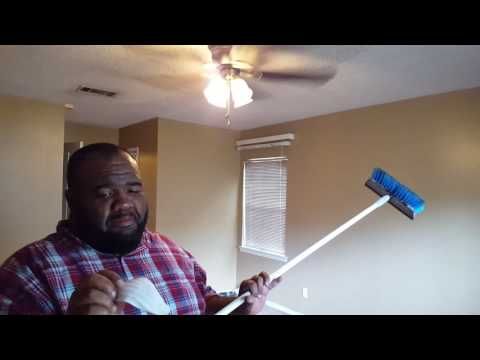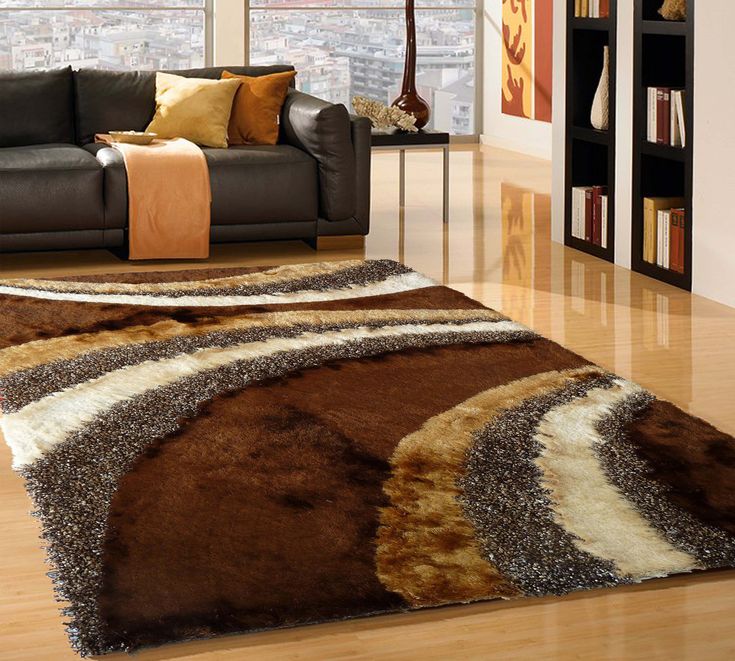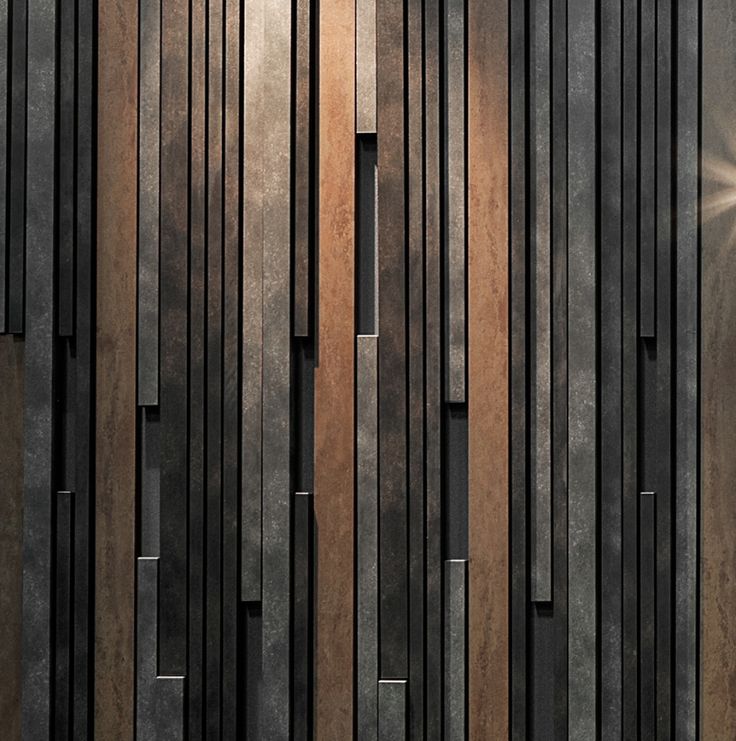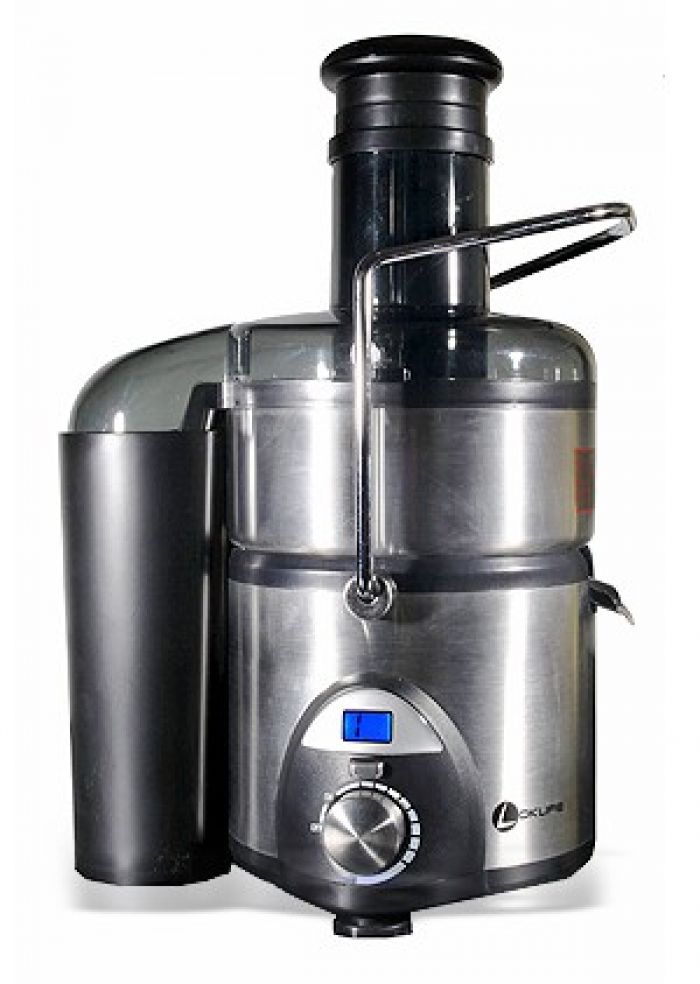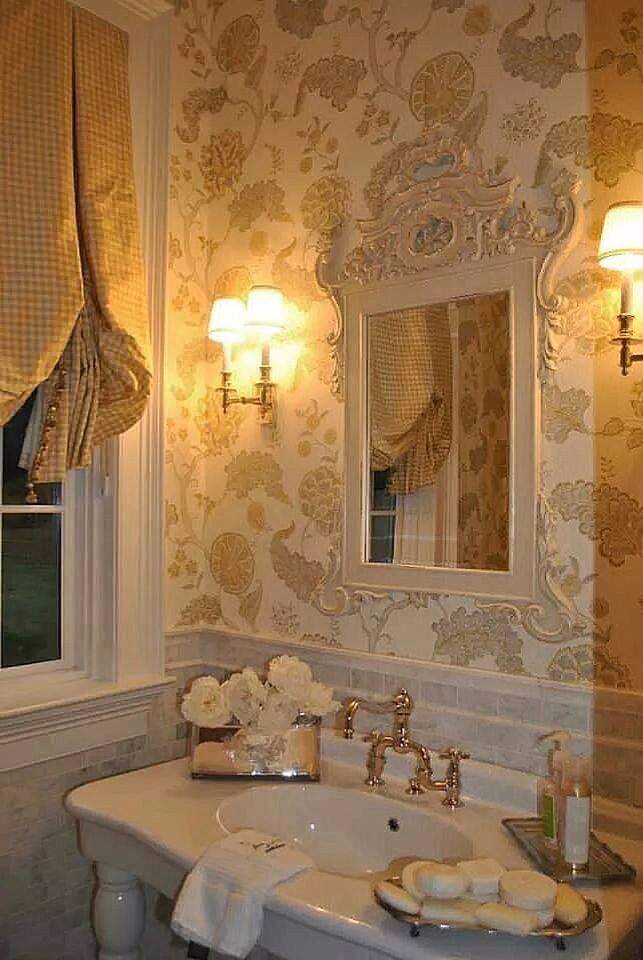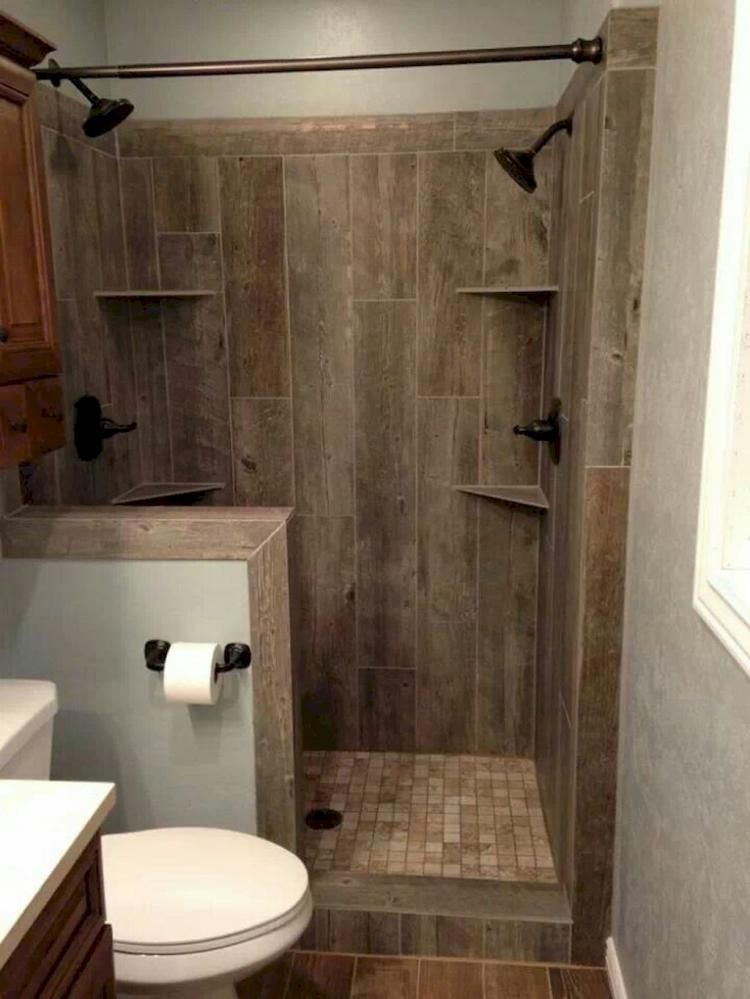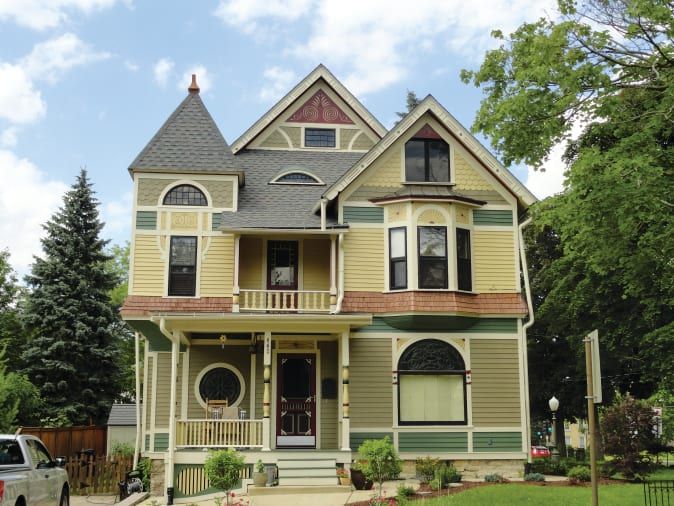Sanding popcorn ceilings
How to Drywall Sand a Popcorn Ceiling
As popcorn ceilings are becoming less popular, homeowners are deciding to remove them. Many people do not consider using a sander, and instead, decide to scrape off the texture.
Sanders can be used to flatten texture, especially wood surfaces, but can this process get rid of popcorn ceilings?
Let’s dive into whether sanding can effectively remove popcorn texture and how you can perform this process at home.
Can You Sand Down Popcorn Ceilings and Walls?Although you can use a sander during the process of popcorn ceiling removal, it is not the most effective way and will often not work on painted texture. It can be convenient, but the proper tools are often expensive.
Ceilings
You can use drywall sanders to wear down popcorn ceiling texture. Start with a coarser grit and work your way to a finer grit. Most popcorn texture will be gone by the end of this method, but sanding may not be as effective on painted popcorn ceilings.
Sanding might not leave a perfectly smooth finish, but you can easily apply a skim coat and a layer of paint to flatten the texture. Often the new texture is more pleasing than the popcorn ceiling.
Walls
Sanding is also possible for removing popcorn wall texture. You can use a coarse-grit sander across the entire wall to eliminate the popcorn coating. If the texture remains, use a finer grit to even out any rough areas.
You can also use a joint compound to even out the surface after sanding. Let it dry, sand it once again, and add a layer of primer and paint. This can be very effective in achieving smooth walls.
Also see: Do Popcorn Ceilings Cause Dust?
Can You Sand a Painted Popcorn Ceiling?Popcorn ceiling texture is usually painted. Because of this, sanding will not be as effective on most popcorn ceilings.
Sanding does not work as well on latex paint. Sanders often fail in properly removing the painted texture and can gum up. However, if you have a ceiling with little to no coats of paint, you may be able to sand your ceiling.
However, if you have a ceiling with little to no coats of paint, you may be able to sand your ceiling.
A good way to check whether your ceiling can be sanded is to try to scrape off the texture with your hand. If the texture falls off fairly easily, you can probably use a sander. You can also do this with a dry scraper.
Sanding vs ScrapingWhen homeowners start to remove their popcorn ceilings, they usually attempt the scraping method. For this, you don’t have to buy an expensive sander. The materials needed for scraping are much cheaper.
Scraping is a simple process that most people can do themselves. It doesn’t require any extensive knowledge. It is also much more effective. Even if your popcorn texture is painted, scraping will work.
There are some benefits to sanding, though. The process can be cleaner and won’t create as much mess. During sanding, you don’t have to moisten the texture, so you won’t have to deal with clumps of wet popcorn texture in your home.
If you have a vacuum attachment to your sander, there could be little to no mess at all. The vacuum will catch all the falling dust.
However, sanding doesn’t always work. Scraping is the most popular method of removing popcorn texture because it is very effective. A drywall sander will do a poor job of wearing down popcorn ceilings that have several coats of paint.
Machine To Sand Popcorn CeilingSanding a ceiling by hand is time-consuming and labor-intensive, but thankfully there are tools that you can use to make this experience easier. Drywall sanders, vacuum sanders, and rotary sanders can remove popcorn ceilings quickly and easily.
Drywall Sander
You can easily remove popcorn texture with a drywall sander. This tool has a flexible sanding head and a long arm that allow you to reach the ceiling without too much effort.
The downside to drywall sanders is their price. The Planex Easy Drywall Sander costs $1,058 and most homeowners aren’t going to continually use it.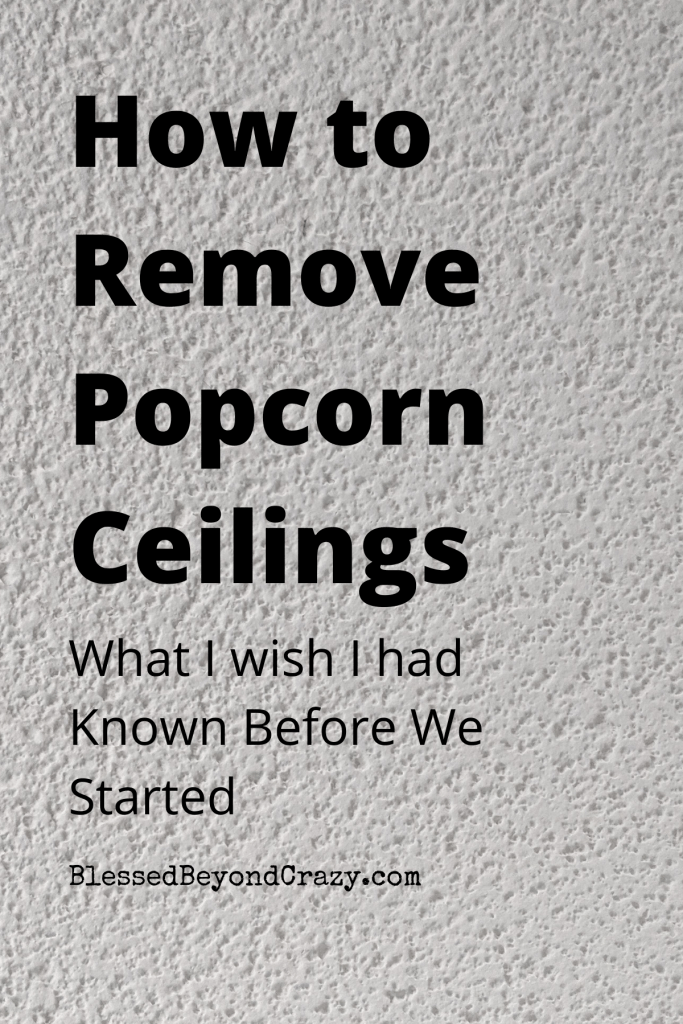 Although a drywall sander is convenient to use, it would be less expensive to scrape the popcorn texture.
Although a drywall sander is convenient to use, it would be less expensive to scrape the popcorn texture.
Vacuum Sander
It’s best to find a sander with a vacuum attachment. Throughout the process of removing popcorn texture, debris will fall to the ground and cover your furniture. A vacuum sander ensures that your home remains dust-free.
Falling dust could not only be messy but also cause health concerns. When you are sanding, the dust could irritate your eyes, dry out your skin, or cause problems for your respiratory system. With a vacuum sander, the vacuum collects dust as you go.
Rotary Sander
Like other sanders, rotary sanders have a round pad that removes debris and smooths surfaces. However, rotary sanders don’t vibrate. The pad moves quickly in a circular motion and removes material more aggressively.
Rotary sanders have high removal rates. They can do a better job of removing stubborn popcorn texture, but it could leave more scratches on the surface.
Sanders can be expensive to buy or rent. Many people choose to scrape off their popcorn ceilings because it is a much cheaper process.
Drywall sanders cost $55 per day to rent, or $1,000 to buy. Popcorn ceiling scrapers are only $20. Sanding may be a more convenient process, but not many homeowners think that it is worth the expense.
The grit isn’t cheap, too. A 25 pack of grit on Amazon costs about $80. For a one-time job, the costs may outweigh the benefits.
For a professional to remove the popcorn ceilings, it can cost anywhere from $1,000-$2,000. Since sanding expenses are close to this, it might be a better option to hire a professional. This would also take pressure off the homeowner to be responsible for this project.
Popcorn Ceiling Sander With Vacuum RentalIf you’re not looking to purchase a drywall sander, you can rent one. This process is as simple as going to your nearest Home Depot.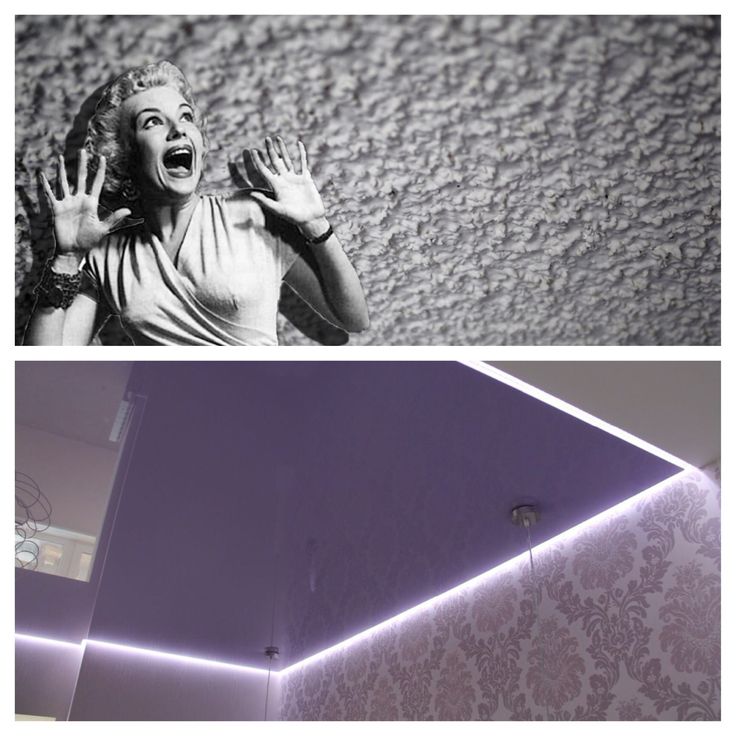
At Home Depot, different prices are depending on how long you plan to keep the sander. They will charge $39 for 4 hours, $55 per day, $220 per week, or $660 for 4 weeks.
Make sure that before you sign a rental agreement, you know exactly when you’ll be performing this work. The price adds up quickly the longer you keep the sander. It would be best to take one day to sand the entire ceiling. This way, you are cutting down on the expense of renting.
Since sanders are expensive, many homeowners cut down on costs by scraping off the popcorn ceiling and then sanding the surface by hand. A pack of 15 sheets of sandpaper only costs $13 at Home Depot.
What Grit Do You Use To Sand Popcorn Ceiling or Wall?The sanding grit depends on what popcorn ceilings you have. If the texture is already painted, use a coarse grit. You should generally start with a grit that is between 36 and 60 and work your way to 100. Starting with a coarser grit and moving to finer grit will make sure to get rid of popcorn texture without damaging the ceiling.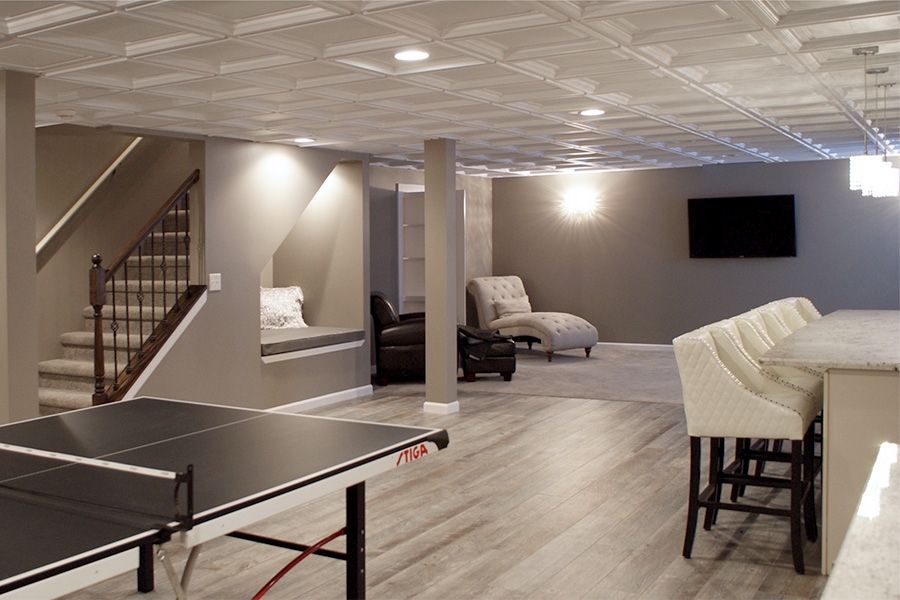
That Kilted Guy, a home improvement professional, uses 25 grit to sand popcorn ceilings. He likes to use a very aggressive grit to get the job done.
You might find that even coarse grit cannot sand a painted popcorn ceiling. If this occurs, you may have to choose a different removal method.
How To Sand a Popcorn CeilingStep one: Cover the walls and floor with plastic drop cloths.
Step two: Scrape the most textured parts with a putty knife. This will make it easier to sand off the popcorn ceiling.
Step three: Find the right grit level put it on the base of a drywall sander. Make sure it is properly aligned.
Step four: Turn on the sander and test a small section of the ceiling. Adjust the grit as needed.
Step five: Sand the entire ceiling using moderate pressure. Make sure that you are wearing protective eyewear and a dust mask. If you don’t have a vacuum attachment, ensure that the room is well-ventilated.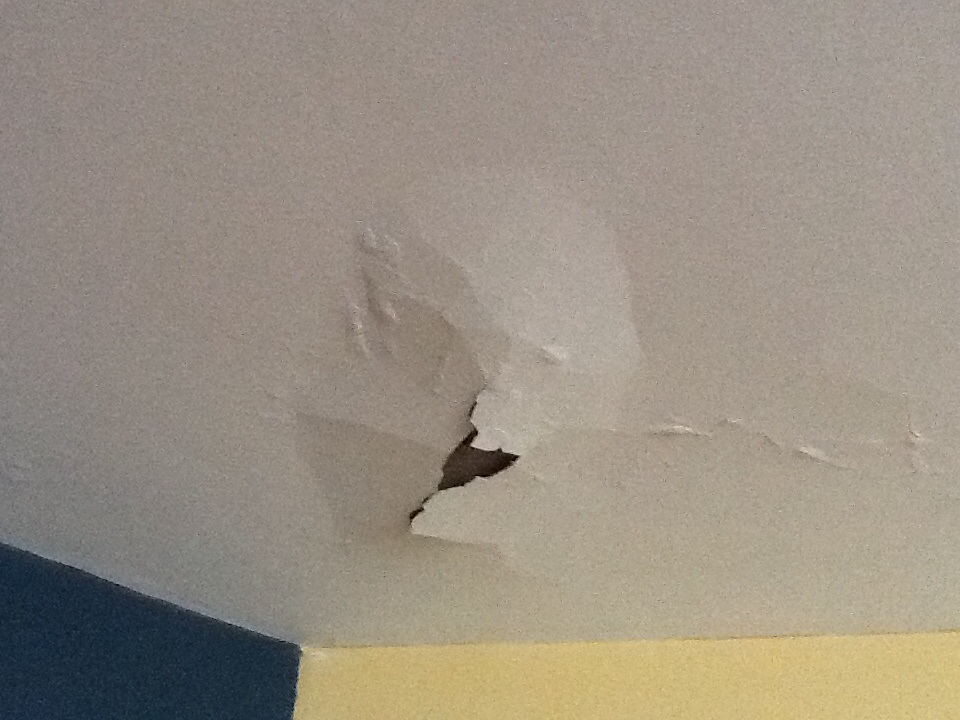
Step six: Skim coat the ceiling. Although some people skip this step, it can be crucial in creating a flat surface for the paint.
Step seven: Prime and paint the ceiling.
The sander may not fully smooth out the popcorn ceiling, but it will create a more aesthetic texture. If the popcorn texture was painted a few times, the sander may not remove it. When this happens, you may have to consider scraping off the texture.
Final Thoughts
Homeowners seem to have mixed feelings about using a sander to completely remove popcorn texture. Some professionals mention that it may not be effective in tackling ceilings that have a few coats of paint. Others claim that it is a much better option than scraping.
It can be much more expensive and may not be incredibly effective. Other options may be more worthwhile. However, sanding does not create much mess and can be a less time-consuming project.
Whatever option you choose, make sure that you are checking your ceiling for asbestos or mold before performing any at-home renovations!
2 Ways to Remove Popcorn Ceilings
Popcorn ceilings. Don’t you just love them! 😉 Kidding of course. We were unlucky enough to have popcorn ceilings throughout our house and I wanted to get rid of them in the worst way. So while we were updating our main floor, one of the first things we tackled was removing the popcorn ceiling. It was not as bad as I thought it would be actually, just a little messy. We are now in the process of renovating a room upstairs and we decided to do it a little differently this time around. So I am going to share with you 2 different ways on how to remove popcorn ceilings in your home.
Don’t you just love them! 😉 Kidding of course. We were unlucky enough to have popcorn ceilings throughout our house and I wanted to get rid of them in the worst way. So while we were updating our main floor, one of the first things we tackled was removing the popcorn ceiling. It was not as bad as I thought it would be actually, just a little messy. We are now in the process of renovating a room upstairs and we decided to do it a little differently this time around. So I am going to share with you 2 different ways on how to remove popcorn ceilings in your home.
First though, a word of caution. Some popcorn ceilings were made with asbestos. You should take care to find out if your ceiling contains asbestos, and if so find another way to tackle that job. We found out that the time frame our home was made, it did not contain asbestos so off we went.
*There are links to products in this post that I use or are similar to products I use. If you buy something from one of these links, I may make a small commission (with no additional cost to you) from the purchase.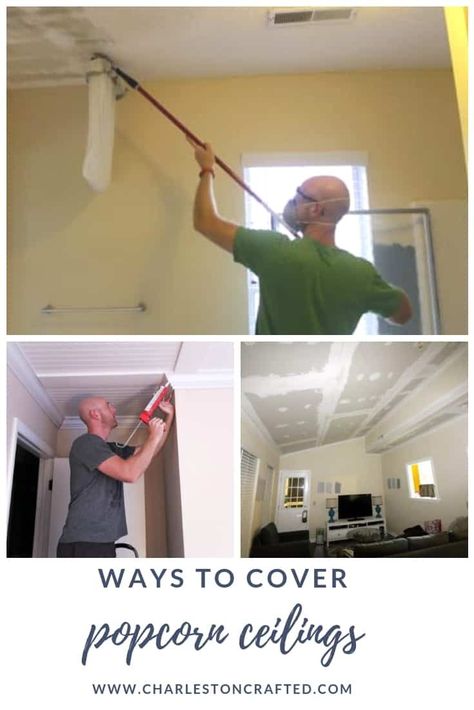 I will not recommend anything that I would not buy myself. Thank you for supporting my blog!
I will not recommend anything that I would not buy myself. Thank you for supporting my blog!
- Garden/Fertilizer sprayer
- 6” putty knife
- 12” Mud pan
- Disposable drop cloths
- Ladder
- Drywall Hand Sander
- Primer/Paint
When we started renovating our main floor, I was not blogging yet so unfortunately we do not have many pictures of the process. However it is pretty easy to explain. I wanted to have smooth ceilings so we knew we were going to have to remove it all. We did some research online and saw that the best way to remove the popcorn was to get the ceiling wet before scraping it.
We bought a new fertilizer sprayer to spray the ceiling, they are fairly inexpensive. Actually we already had one but it had been used with fertilizer already and we did not want to take the chance with using that. We knew that we would use it again for the upstairs anyway (well at least we thought that at the time…lol).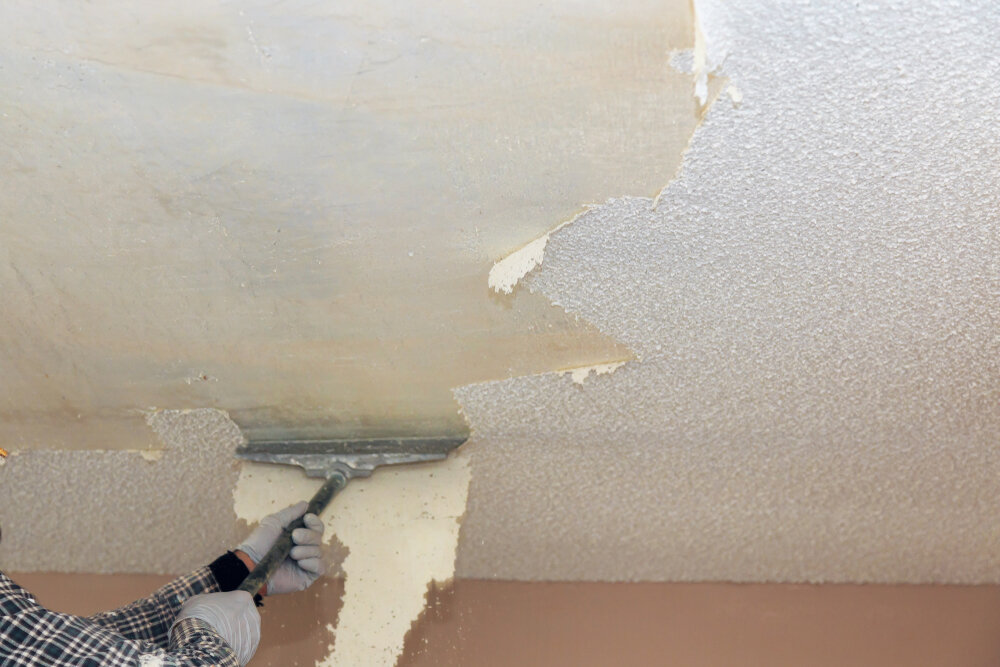
Mr. Wonderful did the hard work while I stayed on the floor and “assisted”. I will have you know that is a very important job! 😉 He sprayed the ceiling first to get it wet, working in smaller sections, about 3’ x 3’. He would saturate it pretty well. The ceiling would drip water and also drop some of the loose wet texture once in awhile so make sure you have your floors (and anything else you don’t want texture on) covered with drop cloths. In the kitchen we have laminate flooring so we did not cover it, I would just clean it up as we went along so we did not track it all over.
We let the water “soak in” for 3 minutes before starting to scrape. Attempting to keep the waiting time to a minimum, Mr. Wonderful would spray the next area so that the 3 minutes would go by while he was scraping the currently prepared section. Mr. W got a pretty good rhythm going once he got started, but advises that you get your process figured out before getting too far ahead of yourself.
Scraping went along easily using the 6 inch putty knife and a mud pan. Hold the mud pan just below the area you are scraping and the scrapings fall directly into the pan. We had seen tools that had a putty knife with a piece to attach a garbage bag. In our opinion this is not a viable option with wetting the ceiling as the weight of the scrapings would get too heavy. Even after doing the scraping with Method 2 we still think it would not be worth the hassle.
After all the scraping was done, the ceilings were looking pretty good! It was amazing how much it brightened up the room. You don’t realize how dingy the ceiling looks until you take off the popcorn! It also made the ceilings seem taller, I am not sure why but it did. Since we were not adding texture and wanted a smooth ceiling, we had to sand them smooth. Using a drywall sander, Mr. W lightly sanded the whole ceiling. After he was done with the sanding, we checked over the ceiling with a flashlight shining across of the surface to look for any areas that still needed to be smoothed out. Anal much? Lol. I have to say that the effort was worth it though, they look amazing!!
Anal much? Lol. I have to say that the effort was worth it though, they look amazing!!
We put a rag on a broom and brushed the ceilings to get the dust off and then applied the first coat of primer/paint. The ceiling soaked this up pretty well. The second coat really made everything look great! We used a paint that we got at Menards that was a primer and paint in one. It was color matched to Benjamin Moore’s Simply White in a flat finish. You want to use flat finish for the ceiling so the light does not reflect off it as well and it hides the flaws better. Just in case we missed a spot in all that sanding! 🙂 Here are some pictures of the finished ceiling. The only texture on there now is what came from the paint roller. These were also taken after we painted and put in recessed lighting.
Method 2For this method you will need:- 3” putty knife
- Disposable drop cloths
- Ladder
- Drywall Hand Sander
- Medium 120 Grit Drywall Screens
- Primer/Paint
- Breathing Mask (You may not need this elaborate of one but we already had it so we used it)
- Fan
When we started to think about renovating this current room, we decided to try a different route to removing the popcorn ceilings.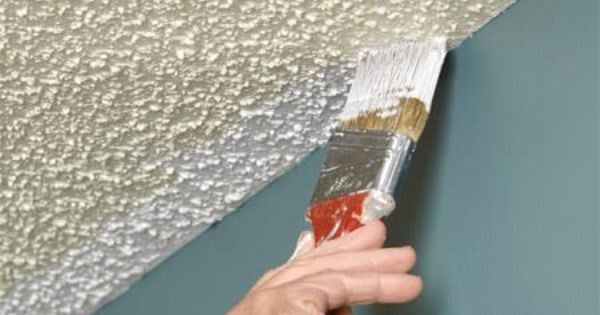 Mr. Wonderful thought this idea would work and it sounded A LOT easier than Method 1. This method would leave us with more of a knock down or orange peel texture. Here is a before shot of the popcorn ceiling.
Mr. Wonderful thought this idea would work and it sounded A LOT easier than Method 1. This method would leave us with more of a knock down or orange peel texture. Here is a before shot of the popcorn ceiling.
We again used plastic drop cloths to cover the floor. They make for easy cleanup!
Mr. W took a 3 inch putty knife and started to scrape the texture off without wetting it this time. Since we were not wanting a smooth finish, he only was scraping off the spiky parts.
Here is a picture showing the right half scraped and the left half not scraped. It is hard to see in the picture and it was hard to tell at this point how it was going to look because the scraped part had dark marks all over it from the putty knife.
After he finished the scraping, he used the drywall sander with 120 Grit screens and lightly sanded the ceiling. We had a fan blowing out the window and Mr. W wore a breathing mask as we were not sure how much dust this was going to create. It really wasn’t too bad on the dust part although I would still recommend the mask. You don’t want to be breathing in any dust!
It really wasn’t too bad on the dust part although I would still recommend the mask. You don’t want to be breathing in any dust!
We painted two coats of primer/paint again, same kind & color we used in method 1. Here is a picture of the finished project. Next we will be sharing how we lit this room up! We got rid of that lovely light (#sarcasm) in the middle of the room and installed recessed lighting. The room is so much brighter now!
In retrospect, it was soooooo much easier and only took about 30 minutes to do the room (excluding the painting). Also, I like the look of the texture on the ceiling and it is definitely more forgiving than a smooth ceiling. When the lights are on, you cannot really see the texture though. This picture shows a closeup of the textured ceiling.
If you are contemplating removing your popcorn ceilings, I would say go for it! It makes such a difference in your room. Like I mentioned, it looks much brighter and gives the illusion of taller ceilings! Here is a side by side comparison of the room we just did and the hallway that has to be done yet.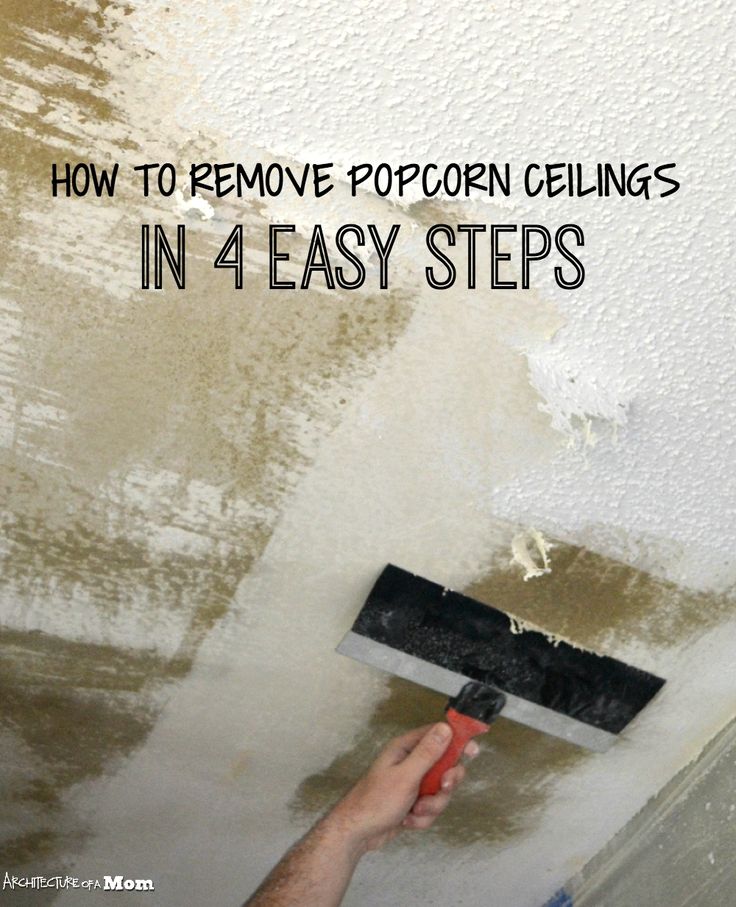 Much better, right? Of course the lighting in the room is better but you can see how much brighter it looks! If you are wondering what is on the ceiling in the room, that is a monorail track that runs around the room. You will see that in a future post. 🙂
Much better, right? Of course the lighting in the room is better but you can see how much brighter it looks! If you are wondering what is on the ceiling in the room, that is a monorail track that runs around the room. You will see that in a future post. 🙂
Just one other side note, luckily our popcorn ceilings were not painted. I have read that is not such an easy process if you have painted popcorn ceilings. However, method 2 would be an option you could do if you have painted ceilings. Do you feel inspired? Let me know if you have any questions.
Ceiling Popcorn Cover And Make It Smooth 💡 Home Renovation | Ru.homeinteriorz.com
- Curle ceiling with drywall
- Ceiling ceiling with prepared ceiling boards
- Ceiling ceiling with pine and grooves
- Alternatives of Popcorne Coating
- 1. Removing Popcorne texture
- 2. Removing integral 2. drywall ceilings
Textured ceilings, commonly referred to as popcorn or cottage cheese ceilings, are often the object of dissatisfaction among many homeowners.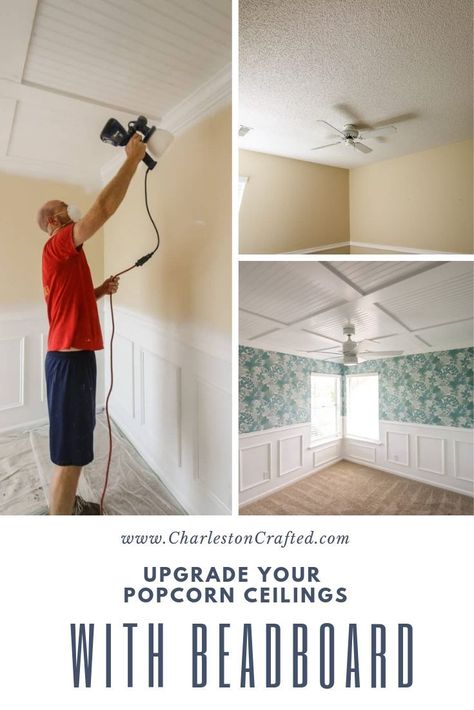 A builder or drywall installer mostly uses popcorn ceilings as this style of finish reduces dirt and sanding. Because smooth glass cleanliness takes time and money to achieve, builders will want textured ceilings as a benefit.
A builder or drywall installer mostly uses popcorn ceilings as this style of finish reduces dirt and sanding. Because smooth glass cleanliness takes time and money to achieve, builders will want textured ceilings as a benefit.
But homeowners rarely win.
Textured ceilings are the virtual magnets of the web. They are difficult to clean. They are difficult to draw. They reduce the natural light in the room. Many homeowners would prefer these 1960s moonscapes to disappear and be covered in a sleek painted ceiling. Apart from removing the texture or the ceiling itself, covering that texture with a second ceiling skin is another option.
Surface ceiling with plasterboard
Summary: 1/2" or 1/4" Drywall Installed Over Existing Popcorn Ceiling Drywall
Description: Since you already have drywall on the ceiling, why not just add another layer underneath?
When remodeling a home, it is often easier to cover up a problem area than it is to completely remove and replace the area.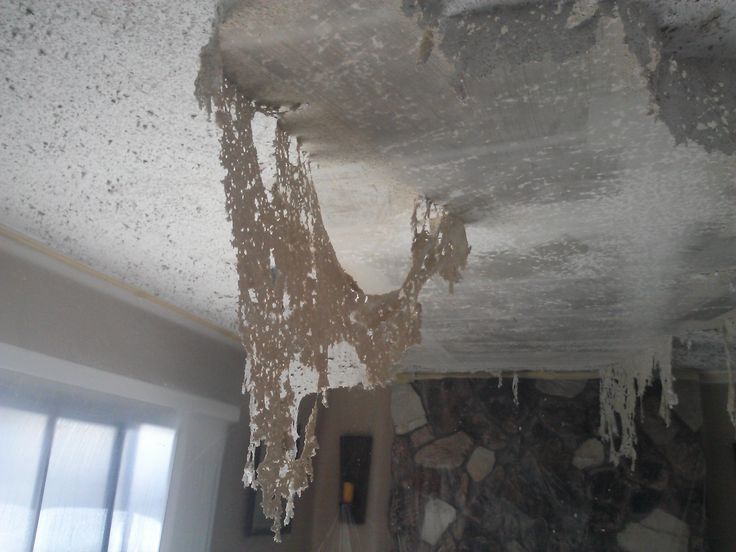 Floors are usually covered with a second layer. Plasterboarding your existing ceiling means you don't have to worry about asbestos or lead paint, which are often found in both texture and paint.
Floors are usually covered with a second layer. Plasterboarding your existing ceiling means you don't have to worry about asbestos or lead paint, which are often found in both texture and paint.
Cleanliness is a plus. Because you won't be pulling the drywall out, you won't have to deal with the huge amount of attic insulation, debris, and vermin that descend on your home interior when the drywall falls.
Pros
- Inexpensive: You only need to buy inexpensive drywall and screws.
- Drywall skinning is the only concealment option that provides a level ceiling.
- Of the three concealment methods listed here, this is the one least likely to compromise your resale value if you list your home on the market. Since this is a traditional type of ceiling, it will be accepted by almost all potential buyers.
Cons :
- Adding another ceiling layer increases the overall weight of the ceiling.
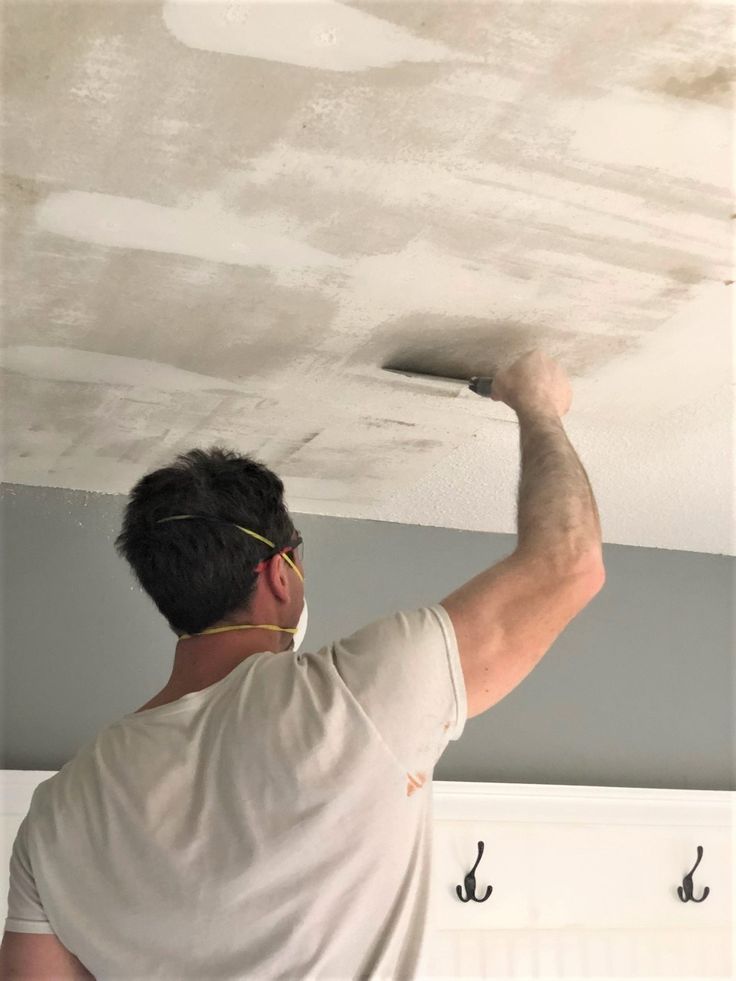
- The thicker ceiling makes it difficult to install recessed lamps and junction boxes because their connection clamps often cannot accommodate thicker materials.
- Drywall is extremely difficult to install without drywall. A half-inch drywall, even ultra-light drywall, is still too heavy (at 44.5 pounds) for one person. You need to rent drywall or use two other people. A quart-inch pebble is lighter but equally bulky. Also, because it is thinner, it is more prone to breakage when you process it.
Ceiling ceiling with prepared ceiling boards
Summary : Cover boards made of fibreboard made especially for this purpose. Boards are laid on top of the arc strips.
Description : Armstrong, a well known flooring manufacturer, sells its Woodhaven ceiling boards as an alternative to ceiling popcorn removal, among other features.
These MDF ceiling boards have a tongue and groove that are each 5 inches by 84 inches.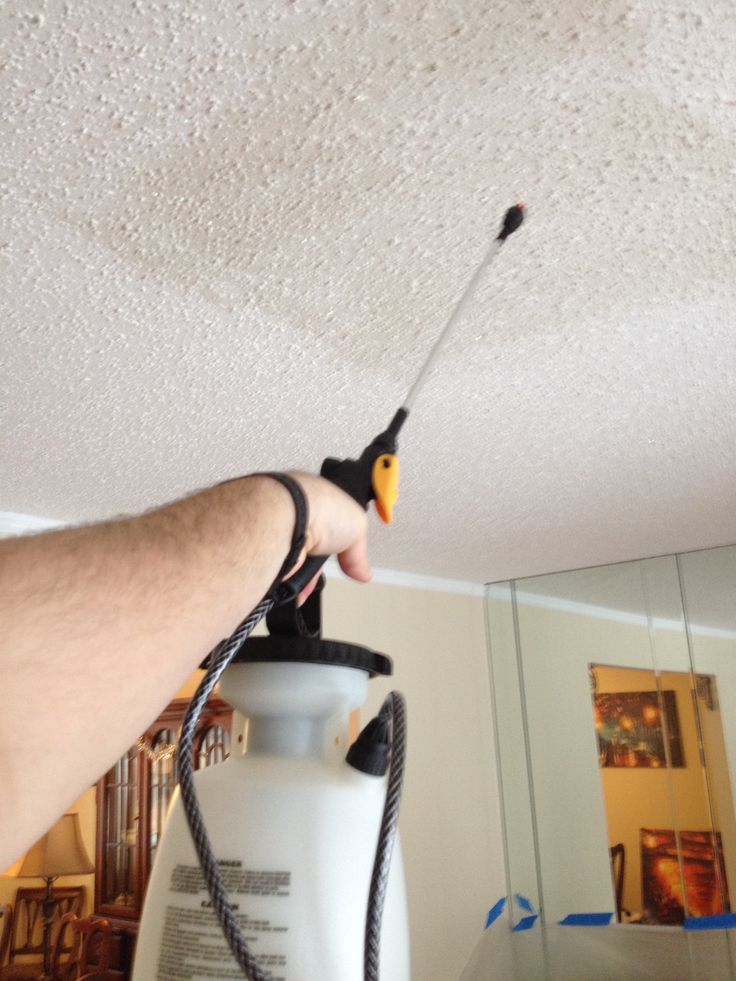
For best results, you can use Armstrong's Easy Up mesh. Like a traditional hooded mesh, it keeps all panels stable and organized. But unlike the ceiling grid, the grid is not visible. The shields are attached to the outside of the net with snap-on clips.
Woodhaven Ceiling Boards can be installed directly on drywall, provided the drywall is flat. Alternatively, attach a grid of fence strips (1 x 2 boards, available at most home improvement centers). While this allows the mesh to be pulled out so that it is perfectly level, you also lose some ceiling height from the added layer of trim strips.
Pros
- The boards match perfectly.
- The optional grid system is beneficial if you have a severely distorted or damaged ceiling.
- Eliminates the need for painting and finishing.
Cons :
- This system is the most expensive option listed here.
- Limited availability.
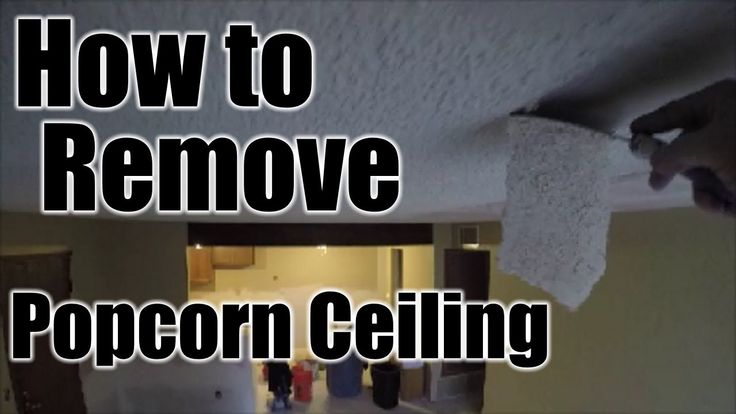 You probably won't find this on the shelves at your local retailer. Typically this is a special order item.
You probably won't find this on the shelves at your local retailer. Typically this is a special order item.
Ceiling with pine and grooved ceiling boards
Summary: Custom natural wood boards purchased from a lumber yard or a home improvement store.
Description: As an alternative to expensive ceiling systems, why not install something cheaper on your grid? This DIY method uses inexpensive lumber found at your local vendor. Most home care stores have pine or fir softwood (such as pine or fir) that can be glued directly to the strips.
Pros :
- While ceiling covering may not be cheap, it is the least expensive option listed here.
- This option allows for a wide variety of styles as the wood can be stained and finished to your specifications.
Cons :
- Unless you own a truck, it will be difficult for you to transport lumber because it pays to buy the longest boards.
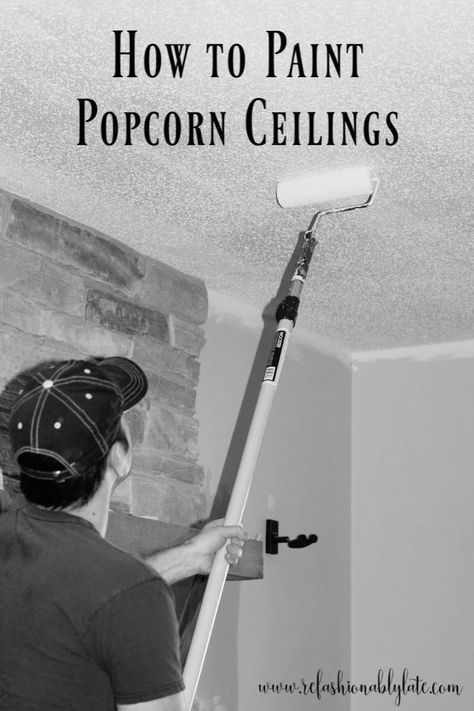
- Long boards are often not completely straight and need to be adjusted to fit.
Popcorn Coating Alternatives Ceiling
If you're not interested in any hiding options, there are two other methods: removing the popcorn itself or removing the entire ceiling.
1. Popcorn Texture Removal
Level your floor with plastic sheeting. Enter the stairs. Delete the popcorn texture. Fold up the plastic and discard everything. Paint the ceiling.
In an ideal world this should be so easy, but often it is not. Removing the popcorn ceiling texture comes with its own set of challenges.
For example, suppose the texture contains asbestos. Some of these materials require special care to remove. Renting an asbestos removal company is expensive. On the other hand, removing popcorn is very similar to peeling paint: it's misleading to assume that light sections indicate the rest of the surface area.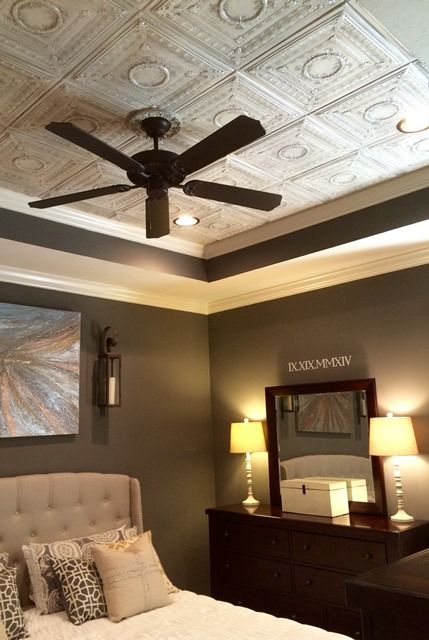
One area is easy to get off and other areas are so fiendishly difficult that you push drywall paper out to get it off.
On the plus side, popcorn removal provides maximum ceiling height. For demanding areas such as basements where every inch counts, you may want to remove the texture for this very reason.
2. Removing a Solid Drywall Ceiling
Ultimately, completely removing the popcorn and drywall texture can be easier than trying to clean up the texture and fix it so it can be painted.
One reason this might be better is that the old plaster wall is usually nailed into place rather than screwed. Many nails will come out with the drywall as you pull it up. Another benefit: You don't have to worry about installing old, hollowed-out drywall.
But you still have the potential problem of asbestos in the texture. Removing the entire ceiling does not reduce the danger of this.
Instruction video: .
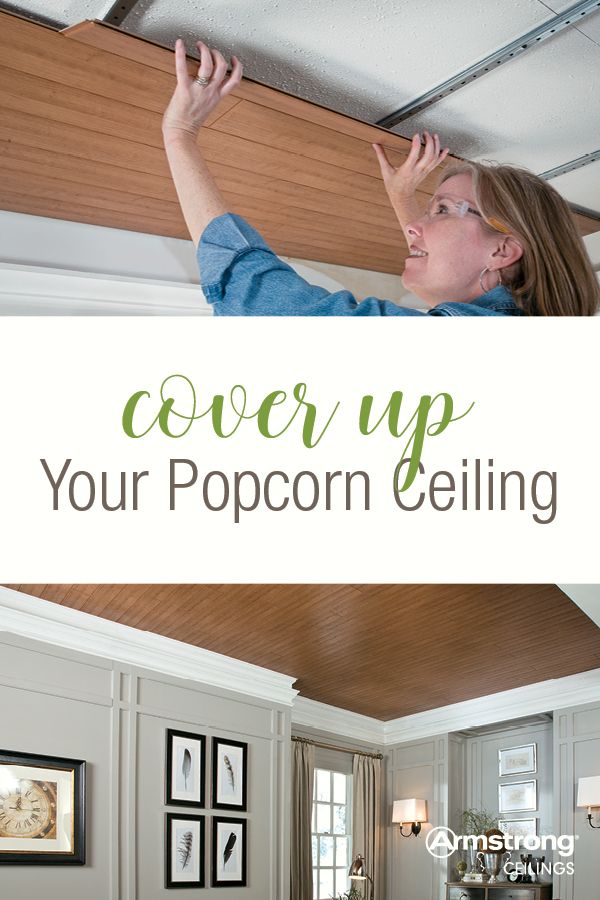
7 Questions to Ask About Removing Popcorn Blankets Before Hiring a Contractor
Removing a popcorn blanket is very common these days. This is how your contractor is robbed and scammed. There are a lot of good contractors out there who do a great job, but there are also a lot of scammers and night flight companies out there just ready to rip you off. As real estate values across the country have plummeted, many homeowners are opting to upgrade their existing homes with simple, low-cost interior renovations like popcorn removal.
Homeowners should ask their popcorn harvester these 7 questions before hiring them. It's very common to remove popcorn ceilings these days as many homeowners are retrofitting their existing homes. Popcorn ceilings are outdated and many homeowners prefer the knockdown texture of popcorn.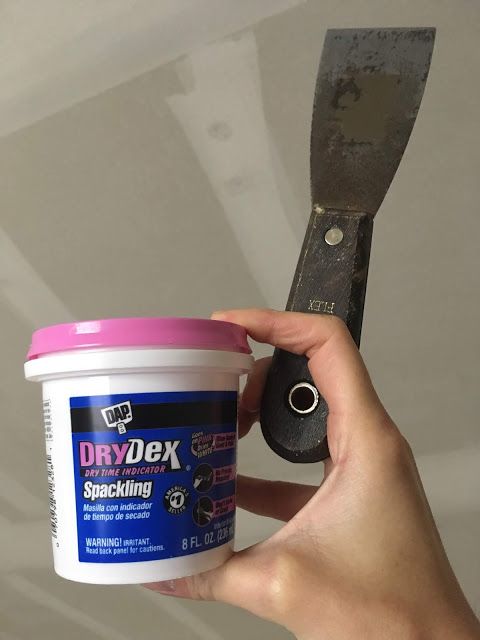 The knockdown texture just looks better, and there's a good ROI since popcorn removal is an affordable upgrade that can add value to a home. Before hiring a contractor in the Orlando area, ask these 7 questions to avoid scams and scams.
The knockdown texture just looks better, and there's a good ROI since popcorn removal is an affordable upgrade that can add value to a home. Before hiring a contractor in the Orlando area, ask these 7 questions to avoid scams and scams.
Popcorn Ceiling Removal Question #1 - “Do I need to worry about lead testing in my home?”
If your house was built before 1978, the answer is yes. If your house was built after 1978, the answer is no. According to EPA.gov: “Common repair work such as sanding, cutting, and demolition can generate hazardous lead dust and shavings due to exposure to lead-based paints, which can harm adults and children.
To protect against this risk, on April 22, 2008, the EPA issued a regulation requiring the use of lead-safe practices and other measures to prevent lead poisoning. As of April 22, 2010, this rule requires that contractors performing renovation, repair, and painting work that violate lead paint in homes, child care facilities, and schools built before 1978, passed the certification and followed certain working methods to avoid lead pollution to prevent .
The EPA requires that firms performing repair, repair, and paint projects that interfere with lead paint in pre-1978 homes, childcare, and schools be EPA certified and employ certified repairers who have been trained by EPA-approved lead schools. -Safe working methods. For popcorn removal projects, it is important to use Lead Safe Certified Contractors.
Removing the Popcorn Blanket Question #2 - “Can I remove the popcorn blanket myself and save money?”
The short answer is yes.” However, in the long run, saving a few dollars can be a huge headache for several reasons. The first reason is that the work will be difficult. You will need special equipment, breathing apparatus, eye protection, etc. In most cases, homeowners simply don't have the experience to get the job done right and it can take a very long time. Another reason is that the work can damage other parts of the house, furniture, walls and floors. It gets even more difficult when your popcorn covers are colored.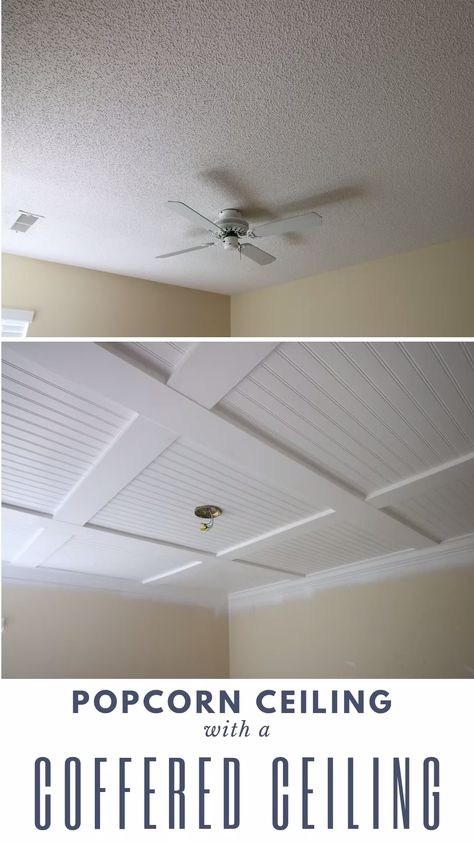
Removing Popcorn Ceilings Question #3 - Is Painted Popcorn Ceilings Harder to Remove?
Dyed popcorn is more difficult to remove as it is difficult to soak the paint with water to thoroughly wet the material before ruining it. This is another situation where the experience of a professional contractor can be very helpful.
Popcorn Ceiling Removal Question #4 - “Will my house be a complete mess after removing the popcorn ceiling?”
Removing popcorn is inherently a dirty job if you do it yourself or have a contractor do it for you. Therefore, it is important to "cover" the entire work area. You should cover all vents with plastic, cover all fixtures with plastic and tape, cover all carpets and floors with plastic, and block off any areas you don't want to work on. Essentially, you need to create a "containment zone" to work with. Professional ceiling popcorn removal contractors will mess up your home less and look better than when you started.
Popcorn Ceiling Removal Question #5 - “Do I need to move all my furniture out of the house?”
The answer is no.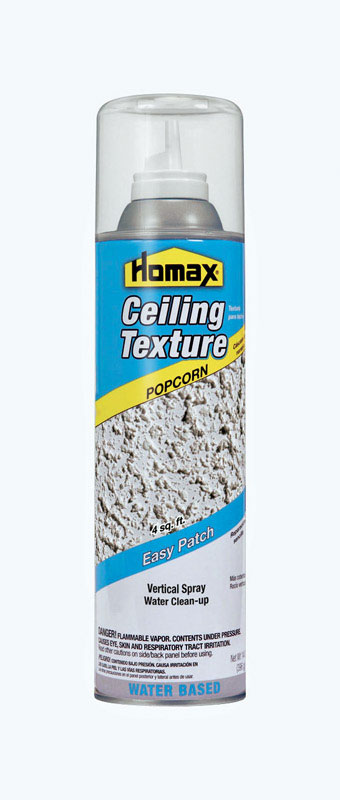 ” Specialists in popcorn removal, painting, ceiling repairs and drywall are the experts in protecting your property. This will "cover" all your furniture, TVs, beds, etc., keeping them dust and damage free. Most businesses want the homeowner to remove all of their capes, photos, small electronics, etc. before starting any housework.
” Specialists in popcorn removal, painting, ceiling repairs and drywall are the experts in protecting your property. This will "cover" all your furniture, TVs, beds, etc., keeping them dust and damage free. Most businesses want the homeowner to remove all of their capes, photos, small electronics, etc. before starting any housework.
Popcorn topper removal question #6 - "How long does it take to remove the popcorn toppers?"
As you understand, each house is individual. It all depends on the size and scope of the work, the condition of the house, the height of the ceilings and whether the rooms are empty or furnished. Remember that after removing the popcorn, you still need to apply the knockdown texture and color it in. If you do the work yourself, set aside at least a couple of days. Professional ceiling popcorn contractors like Textures from Blue Sky, Inc. can typically complete a 3,500-square-foot home in a day. Just make sure you choose the right one for the job.
Popcorn Ceiling Removal Question #7 - “How do I know if the popcorn ceiling removal contractor I hired is doing a good job?”
Conduct research.